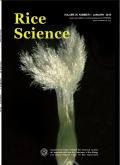Expanding Viral Diversity in Rice Fields by Next-Generation Sequencing
IF 5.6
2区 农林科学
Q1 AGRONOMY
引用次数: 0
Abstract
In rice fields, rice plants usually grow alongside wild weeds and are attacked by various invertebrate species. Viruses are abundant in plants and invertebrates, playing crucial ecological roles in controlling microbial abundance and maintaining community structures. To date, only 16 rice viruses have been documented in rice-growing regions. These viruses pose serious threats to rice production and have traditionally been identified only from rice plants and insect vectors by isolation techniques. Advances in next-generation sequencing (NGS) have made it feasible to discover viruses on a global scale. Recently, numerous viruses have been identified in plants and invertebrates using NGS technologies. In this review, we discuss viral studies in rice plants, invertebrate species, and weeds in rice fields. Many novel viruses have been discovered in rice ecosystems through NGS technologies, with some also detected using metatranscriptomic and small RNA sequencing. These analyses greatly expand our understanding of viruses in rice fields and provide valuable insights for developing efficient strategies to manage insect pests and virus-mediated rice diseases.
利用新一代测序技术扩大水稻病毒多样性
在稻田里,水稻通常和野草一起生长,受到各种无脊椎动物的攻击。病毒在植物和无脊椎动物中大量存在,在控制微生物丰度和维持群落结构方面起着至关重要的生态作用。迄今为止,在水稻种植区仅记录到16种水稻病毒。这些病毒对水稻生产构成严重威胁,传统上仅通过分离技术从水稻植株和昆虫媒介中发现。新一代测序技术(NGS)的进步使得在全球范围内发现病毒成为可能。最近,利用NGS技术在植物和无脊椎动物中发现了许多病毒。本文综述了病毒在水稻植物、无脊椎动物和稻田杂草中的研究进展。通过NGS技术在水稻生态系统中发现了许多新型病毒,其中一些病毒也通过亚转录组测序和小RNA测序检测到。这些分析极大地扩展了我们对稻田病毒的认识,并为制定有效的防治害虫和病毒介导的水稻病害的策略提供了有价值的见解。
本文章由计算机程序翻译,如有差异,请以英文原文为准。
求助全文
约1分钟内获得全文
求助全文
来源期刊

Rice Science
Agricultural and Biological Sciences-Agronomy and Crop Science
CiteScore
8.90
自引率
6.20%
发文量
55
审稿时长
40 weeks
期刊介绍:
Rice Science is an international research journal sponsored by China National Rice Research Institute. It publishes original research papers, review articles, as well as short communications on all aspects of rice sciences in English language. Some of the topics that may be included in each issue are: breeding and genetics, biotechnology, germplasm resources, crop management, pest management, physiology, soil and fertilizer management, ecology, cereal chemistry and post-harvest processing.
 求助内容:
求助内容: 应助结果提醒方式:
应助结果提醒方式:


